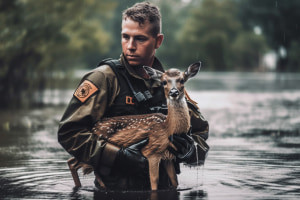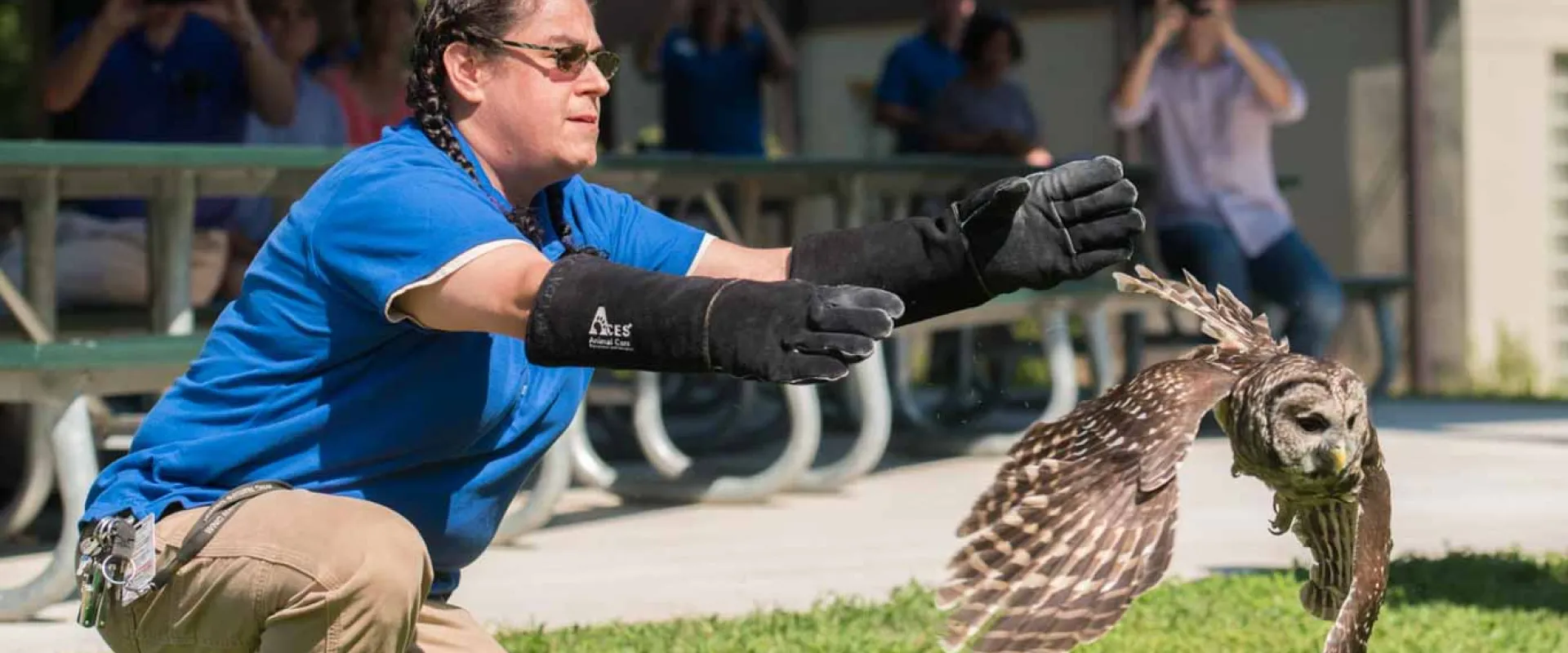Specialist Insights on Burlington Animal Control for Family Pet Owners
Specialist Insights on Burlington Animal Control for Family Pet Owners
Blog Article
The Function of Humane Wildlife Removal in Protecting Resident Ecosystems
Humane wildlife removal is not merely a moral consideration yet a critical part in protecting neighborhood environments. By prioritizing non-lethal methods, it resolves the delicate balance between human development and wildlife habitat conservation. This method not just minimizes disputes however additionally ensures the sustainability of biodiversity. Yet, the efficiency of these approaches warrants additionally examination, particularly in city setups where human-wildlife interactions are significantly intricate. As we contemplate the ramifications of our techniques and their effect on ecological harmony, one have to wonder about just how these techniques can be maximized to foster a much more symbiotic partnership with nature.
Understanding Human-Wildlife Conflicts
Human-wildlife conflicts typically occur when the natural environments of pets converge with human tasks, resulting in competition for sources and space. As urbanization and farming development proceed to elbow in upon wild animals regions, pets such as prairie wolves, raccoons, and deer find themselves in closer proximity to human populaces. This proximity can result in detrimental influence on both wildlife and human beings, as pets may cause damages to crops, framework, and individual residential or commercial property while humans may inadvertently hurt wildlife via habitat destruction and various other anthropogenic pressures.
The complexity of these conflicts originates from a range of factors. Adjustments in land usage, climate modification, and the fragmentation of environments typically require wildlife to adapt to brand-new environments, often leading them right into residential or industrial locations. In addition, the accessibility of human-generated food resources, such as rubbish and animal food, can bring in wild animals to human negotiations, worsening communications and potential disputes.
Attending to human-wildlife conflicts calls for a nuanced understanding of animal habits, eco-friendly dynamics, and socio-economic considerations. By examining these guardians, communications and policymakers can create methods that intend to minimize disputes while protecting biodiversity and maintaining environmental balance. The objective is to cultivate conjunction and minimize unfavorable influence on both human areas and wildlife populaces.
Significance of Non-Lethal Approaches
Mitigating human-wildlife conflicts necessitates techniques that focus on the health of both human beings and pets. Non-lethal methods of wildlife elimination personify this principles by offering options that stop damage to wild animals while resolving human concerns. These approaches consist of exemption strategies, environment adjustment, and using deterrents to prevent wild animals from getting in human settings (wildlife rescue burlington). By utilizing such methods, we can handle wildlife communications without turning to deadly procedures, thus preserving animal populaces and minimizing honest issues associated with murder.
Non-lethal techniques are crucial in preserving ecological equilibrium. They guarantee that varieties remain to accomplish their roles within ecological communities, such as controlling parasite populaces or cross-pollinating plants. These methods usually prove a lot more efficient in the lengthy term, as removing individual animals can create a space that is promptly filled by other participants of the types or different species altogether. This can cause a cycle of ongoing removal initiatives, whereas non-lethal deterrents attend to the source of wildlife presence.
Additionally, non-lethal methods foster coexistence by educating the general public regarding wild animals habits and motivating harmonious living practices. This recognition can bring about extra lasting human-wildlife interactions, ultimately protecting both community passions and animal well-being.
Advantages for Biodiversity
When non-lethal wildlife removal approaches are employed, they add dramatically to biodiversity conservation. By making sure the secure moving of animals rather than their elimination, these approaches maintain environmental balance and safeguard the honesty of communities.

Moreover, these approaches foster coexistence in between humans and wild animals, minimizing adverse interactions and maintaining the abundant tapestry of life that characterizes biodiverse regions. This strategy encourages a much deeper understanding and respect for wildlife, promoting community assistance for conservation efforts. Inevitably, gentle wildlife removal is a vital part in protecting biodiversity, ensuring ecological communities stay practical and vivid for future generations.
Methods for Reliable Removal
Implementing reliable strategies for humane wildlife removal needs a thorough understanding of pet actions and habitat needs. This knowledge serves as browse around here the foundation for developing methods that make sure the honest and risk-free moving of wild animals.
Another essential approach is employing exclusion techniques, which concentrate on securing entrance factors to prevent pets from going back to frameworks. This approach not just resolves the prompt concern however additionally offers as a long-lasting service, decreasing future conflicts between humans and wild animals. The usage of safe deterrents and repellents can encourage pets to abandon areas willingly, enhancing various other removal initiatives.
Capture and moving should always be a last hotel, utilized only when animals posture a straight risk or are incapable to exit by themselves. In such instances, using humane catches and making sure the launch of animals in suitable environments are important to guarding their well-being. Cooperation with wildlife professionals and adherence to legal regulations additionally boost the efficiency of these methods.

Supporting Coexistence in Urban Areas
Advertising conjunction in metropolitan areas needs a diverse strategy that stabilizes human development with the requirements of neighborhood wildlife. As urbanization remains to expand, it is important to apply strategies that reduce human-wildlife disputes while protecting biodiversity. Urban policymakers and planners need to incorporate environment-friendly rooms, such as parks and wildlife corridors, into city styles to supply habitats for indigenous varieties. These locations not only support wildlife but likewise improve the high quality of city life by boosting air top quality and offering recreational areas for locals.
Education and awareness campaigns are important in fostering a society of conjunction. Citizens require to comprehend the significance of wild animals and the duty they play in local environments. Workshops and informative sessions can equip areas with understanding on just how to decrease disputes, such as securing garbage and utilizing gentle deterrents to stop wildlife invasion.
Additionally, technology can play my review here a substantial function in advertising conjunction. The use of wildlife surveillance systems, for instance, can aid track animal activities and notify urban preparation decisions. Cooperations in between ecological organizations, city governments, and neighborhood groups can further enhance these efforts, making certain that urban development proceeds sustainably while appreciating the eco-friendly balance.
Verdict
Humane wild animals elimination is vital for preserving eco-friendly balance and biodiversity by using non-lethal techniques that minimize damage to animal populaces. Ultimately, promoting coexistence in urban areas fosters an unified partnership in between human beings and the natural atmosphere, making sure lasting ecological communities for future generations.
As urbanization and farming expansion proceed to intrude upon wild animals territories, pets such as coyotes, deer, Full Report and raccoons locate themselves in closer closeness to human populaces. Non-lethal techniques of wildlife removal embody this ethos by giving options that stop harm to wildlife while addressing human concerns. By using such techniques, we can manage wild animals communications without resorting to deadly procedures, consequently protecting animal populations and lowering honest issues connected with killing.
Implementing reliable methods for humane wild animals elimination requires a comprehensive understanding of pet habits and habitat needs.Humane wild animals elimination is crucial for preserving environmental equilibrium and biodiversity by utilizing non-lethal approaches that minimize damage to pet populations.
Report this page